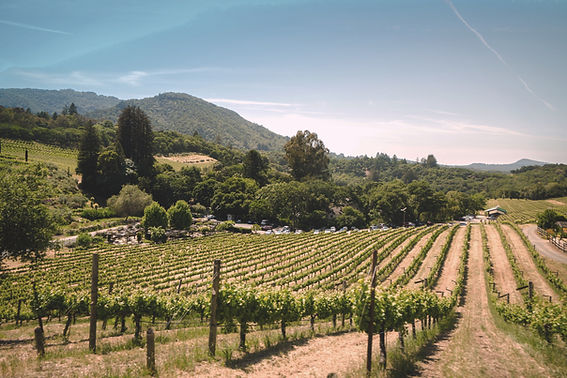Is France Losing Its Love for Wine? Exploring the Cultural Shift in Drinking Habits
- Victoria Daskal
- Jan 31
- 4 min read
Written by Hannah Tomes

Mention France and, for most people, wine is one of the first things that comes to mind. It’s a drink so firmly lodged in the country’s cultural and gastronomic history that an announcement from the French health minister Yannick Neuder that he would be taking part in Dry January this year provoked a fierce backlash from the country’s winemakers. President Emmanuel Macron declared six years ago that the government would not support the initiative, which started in the UK in 2013 – and it never has. Macron also told reporters that ‘a meal without wine is a bit sad’. (Same, Macron. Same.)
With this in mind, reports earlier this month that consumption of red wine in France has fallen by about 90 per cent since the 1970s will surely make for worrying reading in the industry. ‘I think it captures an anxiety that most wine producers in France have today,’ says Colin Hay, Bordeaux correspondent at the Drinks Business. The decline in consumption isn’t specifically a French thing, he says, but ‘it’s perhaps more noticeable in a country like France because it’s so culturally significant’.
A hundred years ago, much of the French workforce was employed in the fields. Cast your mind back even further, Hay says, and French wine production was essentially a vehicle for providing the equivalent of drinking water – known as piquette. ‘Water wasn’t drinkable. And so people drank wine instead, which seems odd, but it was 5 per cent alcohol typically. But it meant that every single person in France who worked in the fields was receiving around 1.5 litres of wine a day, which explains, to some extent, why there was so much production of wine,’ he says.
As water became cleaner, wine was drunk more out of enjoyment than necessity and consumption per capita dropped. It stabilised in the 1980s before falling again. Hay says this second dip can be attributed to intergenerational replacement: ‘Essentially, those who are most likely to die because of their age are the highest consumers of wine in the population, and those who replace them buy less wine. When you put all of that together you get a kind of drip, drip, drip effect which means there’s less demand over time.’
But the fall isn’t just to do with age. Hay, who is also a professor of political science at the Centre for European Studies and Comparative Politics in Paris, says the sustained downturn in French wine consumption ‘suggests that the young are saying that whatever it is culturally to be French does not, for us, include wine to the same extent’. Such an attitudinal shift towards wine as a cultural concept, rather than a consumer habit, presents a huge challenge for the wine industry.
In a bid to fight this downturn, French winemakers – like many others around the world – are turning to low- and no-alcohol alternatives to appeal to a younger generation of drinker. Hay says: ‘Some of it is made for export, clearly, but a lot of it for domestic consumption. It’s probably the most rapidly expanding part of the drinks market in France today. It’s a recent thing and it’s very much targeted at the young.’
Britain’s Evolving Drinking Habits
But the shift towards booze-free alternatives isn’t just a French trend. In British pubs, bars and restaurants, in the 12 months to last June, sales of no- and low-alcohol drinks totalled around £180 million – a rise of 51% from the year before, according to the Wine and Spirit Trade Association. Waitrose has reported a rise in ‘zebra striping’ – where drinkers alternate between alcoholic and zero-alcohol drinks in one sitting – which suggests that the act of drinking, as well as what Britons drink, is shifting.
In good news for French producers, it seems that Britain still has an appetite for wine from the country: Joshua Castle, head buyer for London-based importer Keeling Andrew, says that for consumers of fine wine, France still dominates the market.
But for drinkers looking for quality at a lower price point, we’re looking further afield. Castle says countries such as Greece, Portugal and Spain ‘are delivering high-quality wines that fit the contemporary palate, that is: for reds more moderate tannins, limited new oak influence, lower ABV and generally “fresher” fruit flavours, and for whites more texture and less overt pungent fruity flavours’ at more accessible prices’.
And the growing popularity of British wine reflects how it is winning hearts, minds and tastebuds, too. Waitrose reports that it has seen a bump in sales of wine made with the Bacchus grape – often hailed as Britain’s answer to Sauvignon Blanc – as well as a renewed interest in rosé.
Recommended Wine

For a fresh take on Bacchus, look no further than Renegade urban winery in Walthamstow. Their 2023 ‘Jamie’ Pet Nat (£32) is bursting with fresh flavours and playful peach notes. It tastes kind of like elderflower cordial’s fun older sibling. And for a moreish, fruity red, try a Greek Xinomavro – you won’t regret it.
Hannah Tomes is a journalist at The Spectator. She completed her WSET Level 2 in 2024 and writes about wine on Instagram at @hotsips_


Comments